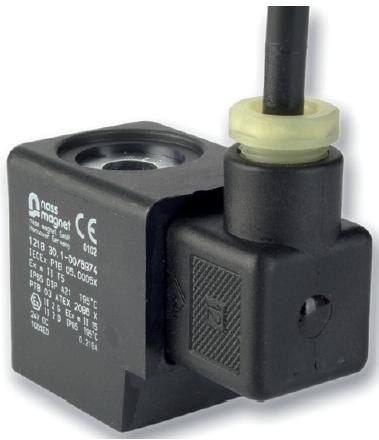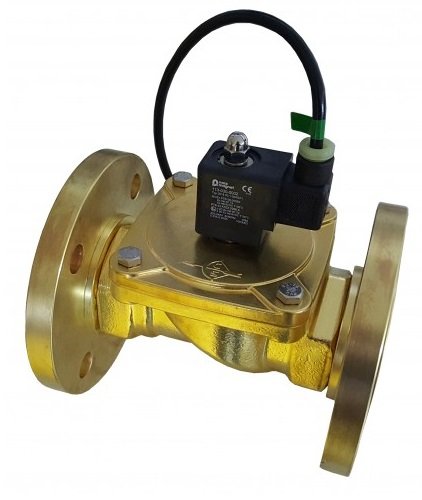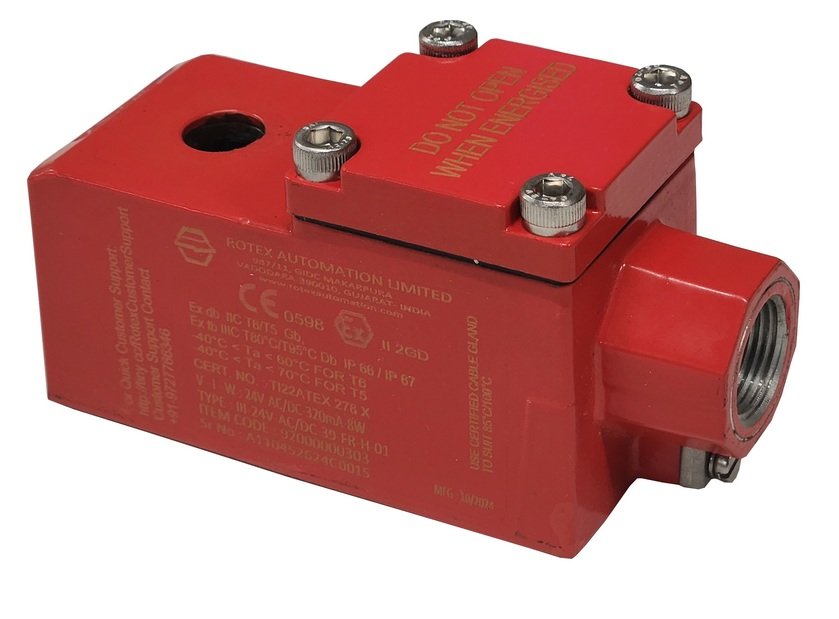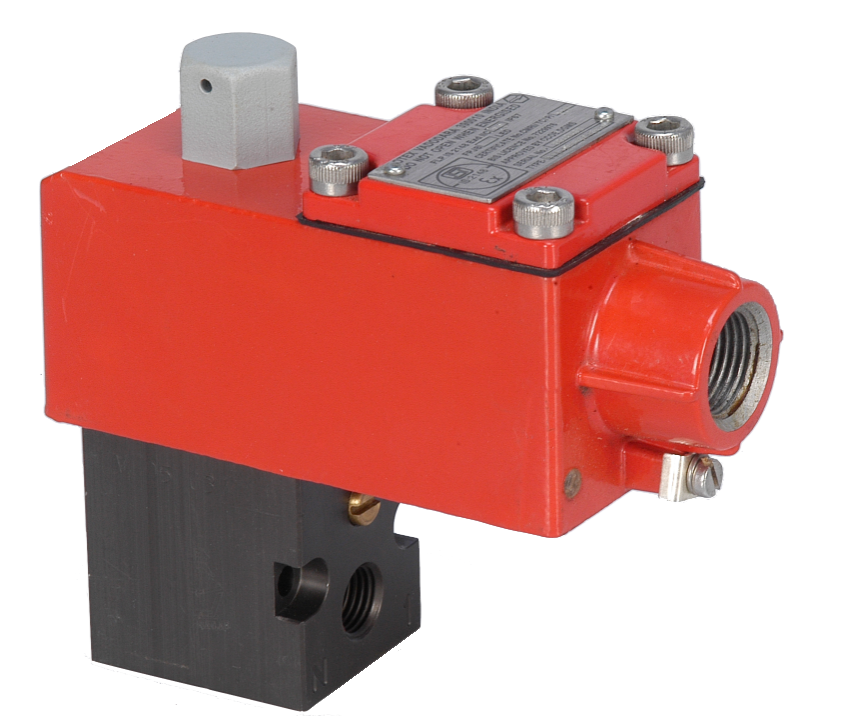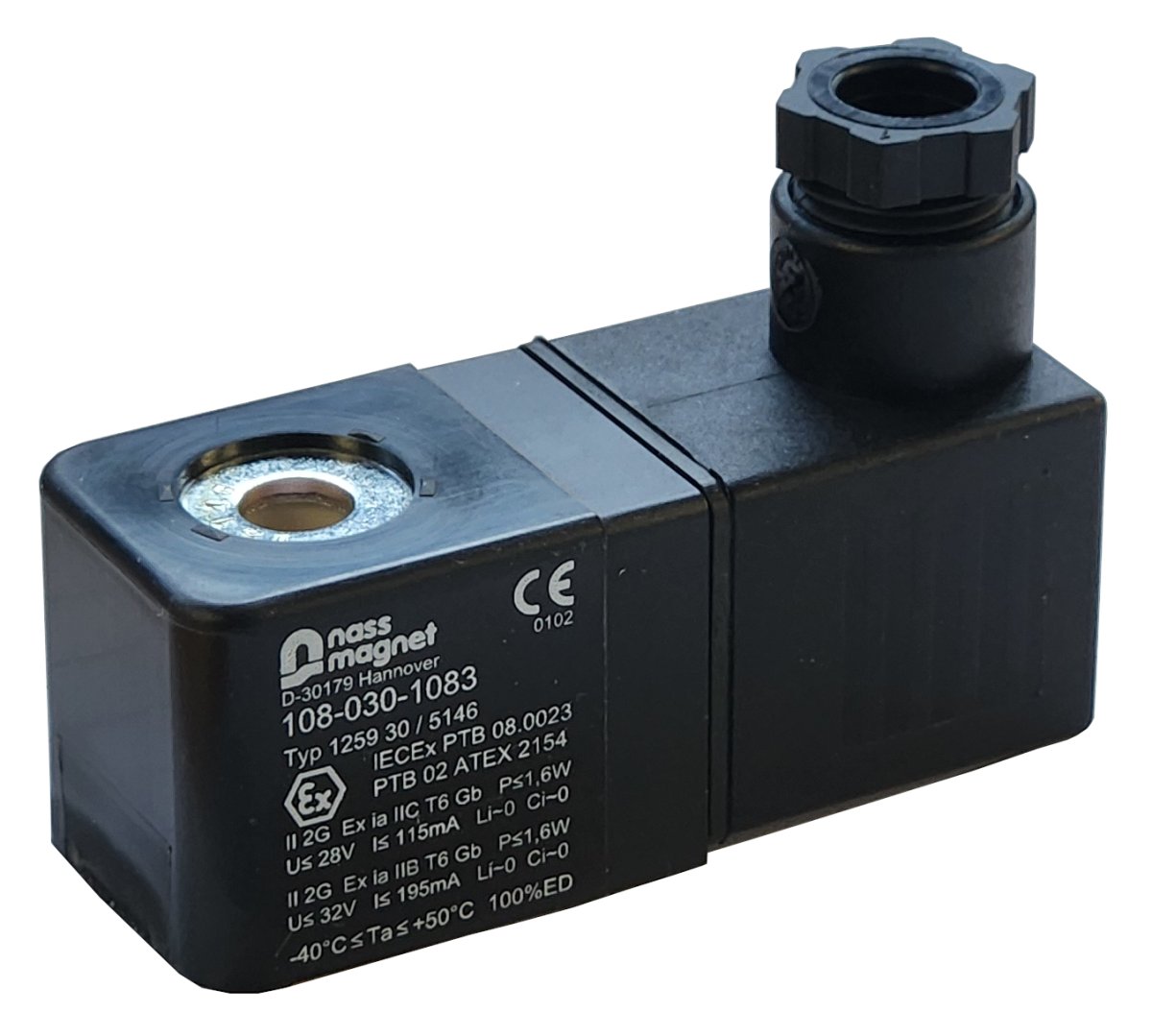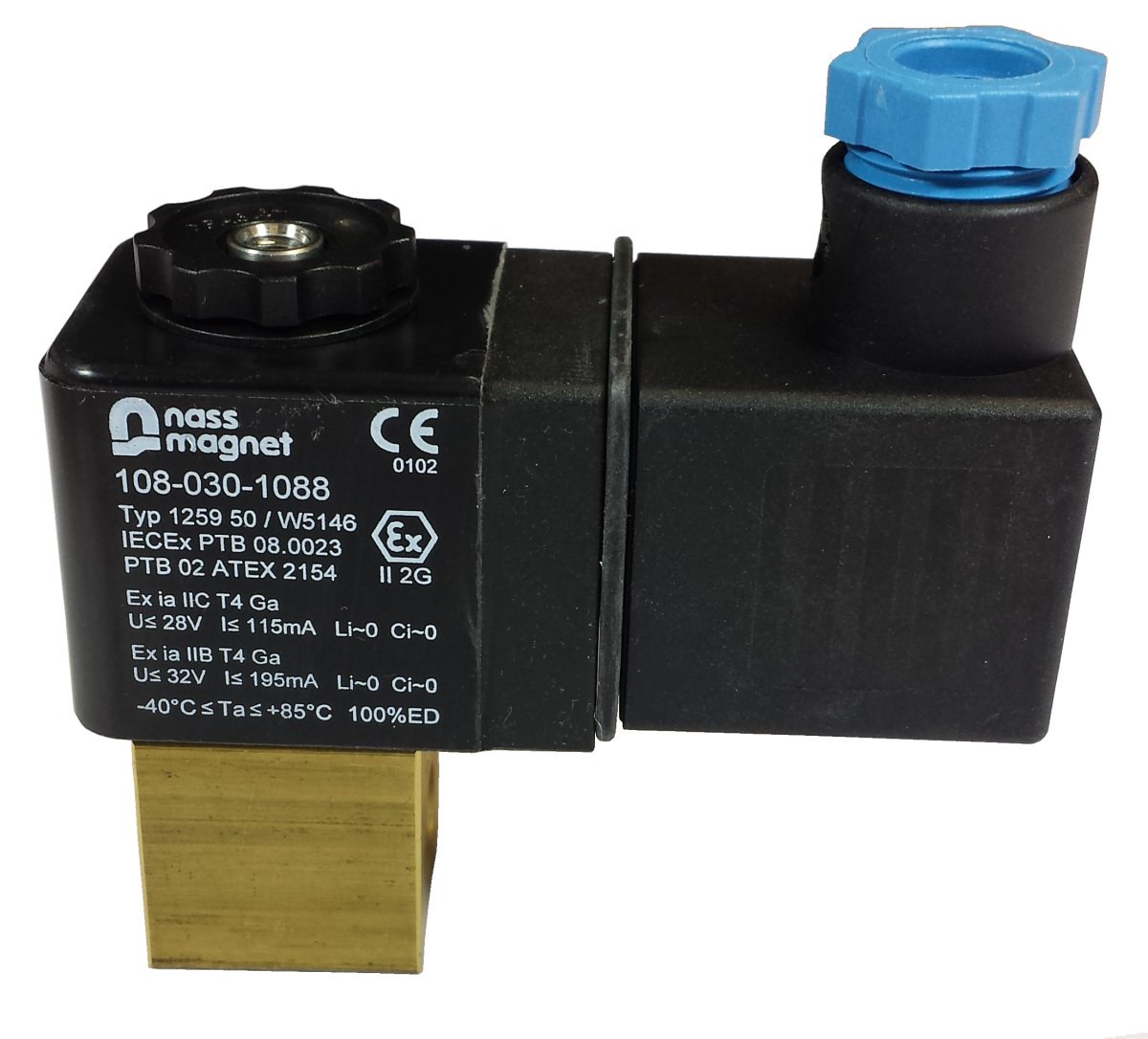ATEX Solenoid Valves – Exm, Exd, and Exia for Enhanced Safety and Performance
At Solenoid Valve World, we provide a comprehensive range of ATEX certified solenoid valves designed to meet stringent safety standards for explosive environments. Our ATEX solenoid valves come with various coil options, including Exm (encapsulated), Exd (explosion-proof), and Exia (intrinsically safe) to suit the specific needs of industries requiring hazardous location compliance.
Key Features of ATEX Solenoid Valves:
ATEX Exm (Encapsulated Coils):
Ideal for applications where protection from dust and moisture is required, Exm encapsulated coils offer enhanced durability and reliability in harsh environments.
Exd (Explosion flame Proof Coils):
Explosion proof solenoid valves are constructed to contain any internal explosions and prevent them from igniting the surrounding hazardous atmosphere. Exd valves are commonly used in high-risk areas with the potential for gas or dust explosions.
Exia (Intrinsically Safe Coils):
Exia coils are designed for environments where the equipment must not be capable of causing ignition even in the presence of flammable substances. These coils are suitable for the most sensitive explosive atmospheres.
Versatile Materials and Configurations:
Our ATEX solenoid valves are available in a range of materials and configurations to suit various industrial applications:
2-Way, 3-Way, and 5-Way Valves: Choose from a variety of valve configurations, including 2-way, 3-way, and 5-way solenoid valves, offering optimal control and versatility for fluid and gas management.
Material Options: Our valves are offered in robust materials, including brass, stainless steel, and various plastics. These materials ensure optimal performance in both corrosive and high-temperature environments, enhancing longevity and minimising the risk of valve failure.
Applications:
Our ATEX solenoid valves are widely used in industries such as:
Oil & Gas
Chemical Processing
Pharmaceuticals
Mining
Automotive
Agriculture
Whether you are handling gases, liquids, or powders, our ATEX solenoid valves provide reliable solutions for safe fluid control in explosive environments.
**Conclusion:**
With ATEX solenoid valves featuring Exm, Exd, and Exia coil options, Solenoid Valve World offers customisable solutions to ensure your operations comply with safety regulations in hazardous environments. The availability of various materials and valve configurations provides the flexibility to tailor solutions to meet the unique needs of your industry, ensuring long-lasting, safe, and efficient performance.
For more information on our ATEX solenoid valves or to request a consultation, contact our technical sales team.
Read about ATEX and IECEx
ATEX Zones Explained
| Zone |
Category |
Presence of explosion atmospheres |
| Group II equipment |
||
| zone 0 |
category 1 G |
Continuous, frequent or for long periods |
| zone 20 |
category 1 D |
|
| zone 1 |
category 2 G |
Intermittent in normal operation (Probable) |
| zone 21 |
category 2 D |
|
| zone 2 |
category 3 G |
Occasional or for short periods (never in normal operation) |
| zone 22 |
category 3 D |
|
Using ATEX Exm outside.
Firstly, I must emphasise that ATEX Exm encapsulated solenoid coils in general and accordingly the Ex coils are indeed not meant to be subjected to outdoor environmental strain.
Almost all customers know by sound engineering practice that this cannot be achieved without being tested accordingly, however this fact is not stated explicitly in ATEX product documentation.
How does one know or deduct from the facts given?
a) The IP-Code standard EN/IEC 60529 is not referring to environmental conditions, whereas the American NEMA 250 does: Outdoor Corrosion Protection Test, External Icing Test. Thus, it is erroneous to derive from an IP-Code 65 suitability for outdoor applications. Outdoor strains are so diverse that you cannot cope for all conditions prevailing at the possible geographical places with a simple IP test done. No way. You will find that the EN/IEC 60068 series of standards has numerous parts that deal with those kinds of strains, none of them is required for Ex certification.
b) It is true that water protection is required by the Ex standards, some require IPx5, IPx4 but even IPx0 is allowed, see Ex 'e' EN 60079-7. This is not absolute water tightness, and we can deduct that water is not a direct cause for arcing even when in contact with blank current carrying parts (as allowed in 'e' EN 60079-7). You cited "A protection concept whereby equipment that could potentially cause an ignition is encapsulated within a compound or resin to prevent contact with the explosive atmosphere". Yes, it is the explosive atmosphere that must be kept out, this is not water.
c) Note that the tests for IPX5 are very short regarding the period of time that water is applied when compared to water strains outdoor. Water creeping into the coil would cause creeping currents therein. Small amounts will evaporate by thermal energy. This would do no harm. Being exposed frequently and long-lasting to water will lead to degradation of the isolating features with a resulting failure thereof and further current rise, meaning excess power and heat in the coil. In this respect, water is critical must be avoided for a reliable installation. The possible fault of a failing isolation within the coil is covered by the mandatory application of a suitable current fuse, see certificate and operating instructions. Please remind your customer in case you doubt that he follows the prescriptions made.
d) 'Outside usage is possible but not uncovered' had been mentioned below. Well, no. Outside usage does mean more than rain from above as explained earlier, a cover may be helpful in some respect but is not considered to be sufficient. These are our points, though very technical, I hope you will find it explanatory.
Try our search ATEX solenoid valves.
The Fuel or Chemical ignition temperature depends on its consistency and its nature. The ignition temperatures for various types of Fuel or Chemical are available from reference tables.
| Fuel or Chemical |
Temperature |
|
| (oC) |
(oF) |
|
| Acetaldehyde |
175 |
347 |
| Acetone |
465 |
869 |
| Acetylene |
305 |
581 |
| Anthracite - glow point |
600 |
1112 |
| Benzene |
560 |
1040 |
| Bituminous coal - glow point |
454 |
850 |
| Butane |
420 |
788 |
| Carbon |
700 |
1292 |
| Carbon - bi sulphide |
149 |
300 |
| Carbon monoxide |
609 |
1128 |
| Charcoal |
349 |
660 |
| Coal-tar oil |
580 |
1076 |
| Coke |
700 |
1292 |
| Cyclohexane |
245 |
473 |
| Diethyl ether |
160 |
320 |
| Ethane |
515 |
859 |
| Ethylene |
490 |
914 |
| Ethyl Alcohol |
365 |
689 |
| Fuel Oil No.1 |
210 |
410 |
| Fuel Oil No.2 |
256 |
494 |
| Fuel Oil No.4 |
262 |
505 |
| Heavy hydrocarbons |
750 |
1382 |
| Hydrogen |
500 |
932 |
| Gas oil |
336 |
637 |
| Gasoline |
280 |
536 |
| Gun Cotton |
221 |
430 |
| Kerosene |
295 |
563 |
| Isobutane |
462 |
864 |
| Isobutene |
465 |
869 |
| Iso octane |
447 |
837 |
| Iso pentane |
420 |
788 |
| Isopropyl Alcohol |
399 |
750 |
| Light gas |
600 |
1112 |
| Light hydrocarbons |
650 |
1202 |
| Lignite - glow point |
526 |
979 |
| Methane (Natural Gas) |
580 |
1076 |
| Methyl Alcohol |
385 |
725 |
| Naphtha |
550 |
1022 |
| Neohexane |
425 |
797 |
| Neopentane |
450 |
842 |
| Nitro-glycerine |
254 |
490 |
| n-Butane |
405 |
761 |
| n-Heptane |
215 |
419 |
| n-Hexane |
225 |
437 |
| n-Octane |
220 |
428 |
| n-Pentane |
260 |
500 |
| n-Pentene |
298 |
569 |
| Oak Wood - dry |
482 |
900 |
| Peat |
227 |
440 |
| Petroleum |
400 |
752 |
| Pine Wood - dry |
427 |
800 |
| Phosphorous, amorphous |
260 |
500 |
| Phosphorous, transparent |
49 |
120 |
| Production gas |
750 |
1382 |
| Propane |
480 |
842 |
| Propylene |
458 |
856 |
| p-Xylene |
530 |
986 |
| Rifle Powder |
288 |
550 |
| Toluene |
530 |
849 |
| Semi anthracite coal |
400 |
752 |
| Semi bituminous coal - glow point |
527 |
980 |
| Styrene |
490 |
914 |
| Sulphur |
243 |
470 |
| Wood |
300 |
572 |
Xylene |
463 |
867 |

